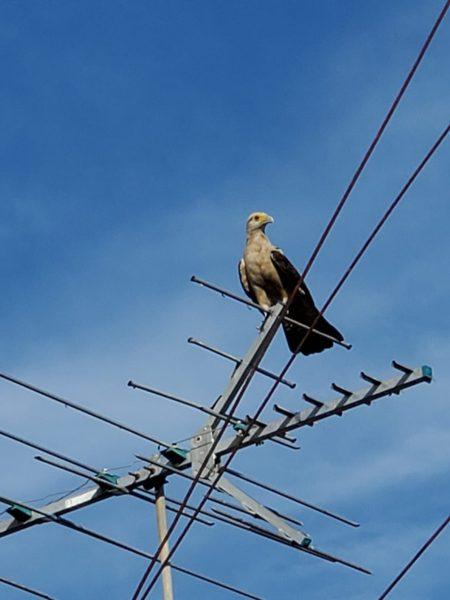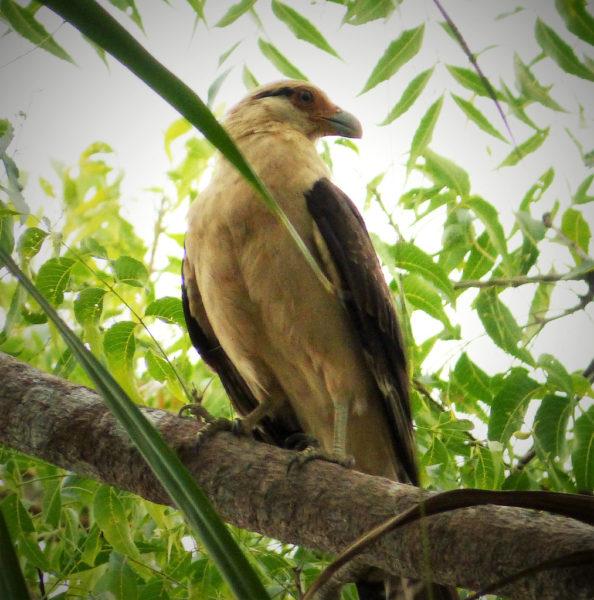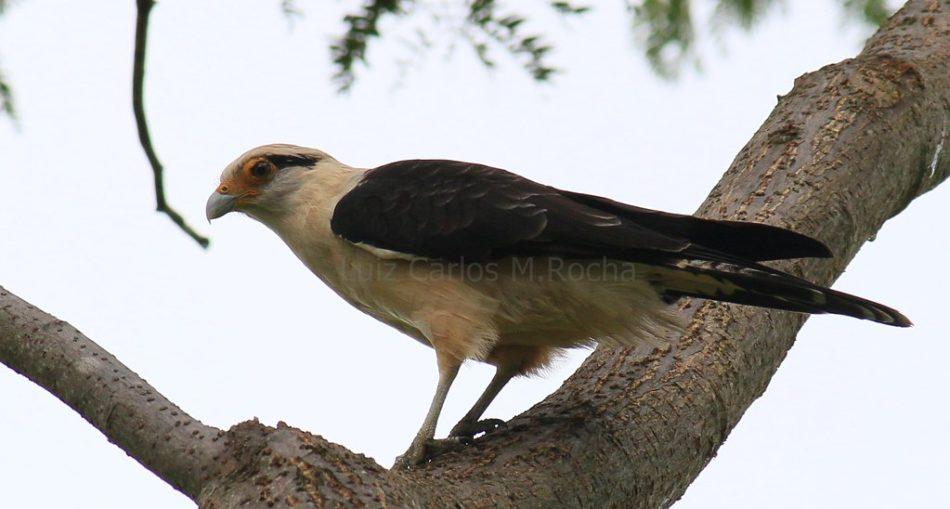About two weeks ago I got the opportunity to see one of these pale yellow birds, I even heard its call. I was quite fascinated by how majestic it looked perched on top of the pole that I could not help but snap a picture. In this article, you are going to learn all about the ‘Yellow Headed Caracara’ and why it isn’t as graceful as it might look.
Scientific Classification
Kingdom: Animalia
Phylum: Chordata
Class: Aves
Order: Falconiformes
Family: Falconidae
Genus: Milvago

Yellow-headed Caracara perched on an antenna. Photo Credits: Danielle Persaud
![]()
![]()
Description
The yellow-headed caracara, as the name says, has a yellow head. The Caracara measures 41–46 cm (16–18 inches) in length. The female weighs 310–360 g (11–13 oz) compared to the male’s 280–330 g. (9.9–12 oz). The adult has buff underparts and a buff head with a black streak behind the eye. The tail is barred cream and brown, and the upper parts are brown with conspicuous pale patches on the wings’ flight feathers. Although males and females have similar appearances, young birds have thick brown mottling on their heads and underparts.
Habitat

Yellow-headed Caracara perched on the branch of a tree. Photo Source: https://www.flickr.com/photos/gails_pictures/40420865465
The yellow-headed caracara can be found in the savannahs, swamps, and at the edges of forests in countries such as Brazil, Argentina, Paraguay, and Costa Rica.
Diet
The omnivorous yellow-headed caracara consumes carrion as well as other small mammals, reptiles, and amphibians. Also, it has been seen foraging for tiny invertebrates in the fur of capybaras and brown-throated three-toed sloths. Additionally, young birds, at least, enjoy eating particular fruits like pequi and oil palm.
![]()
Reproduction
A couple builds their nest in the form of an open cup made of sticks in the tree’s canopy. Many species of caracaras throw their necks back and call loudly, a display which is done in order to attract a mate. Caracaras normally produce a clutch of two to three brown eggs per nest. During the breeding season, they would build separate nests near one another.
Communication
They make loud, unpleasant scratchy-sounding screams descending in pitch (represented as Screeeeee), and a Kraa-Kraa-Kraa sound
Take a look at this video to hear their call sound – https://www.youtube.com/watch?v=U3ExWXK0SxI
Fun Facts:
-
- The yellow-headed caracara was first sighted in Trinidad and Tobago in 1987.
- Louis Jean Pierre Vieillot first described the yellow-headed caracara in 1816, he gave it the scientific name Polyborus Chimachima.
- The yellow-headed caracara is sometimes referred to as ‘Tickbird’ because it has been seen eating ticks off of Tapir and Cattle.
- Although the yellow-headed caracara is closely related to falcons they are not swift, aerial hunters. They stick to scavenging and are quite sluggish in their hunt.







